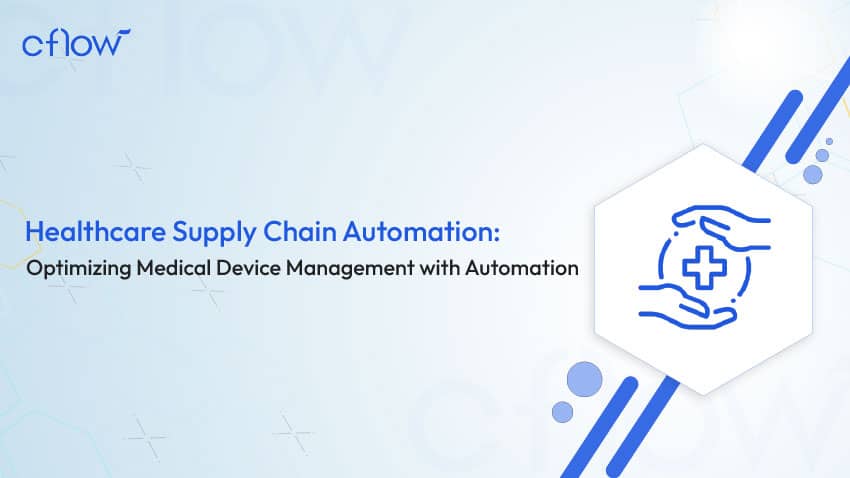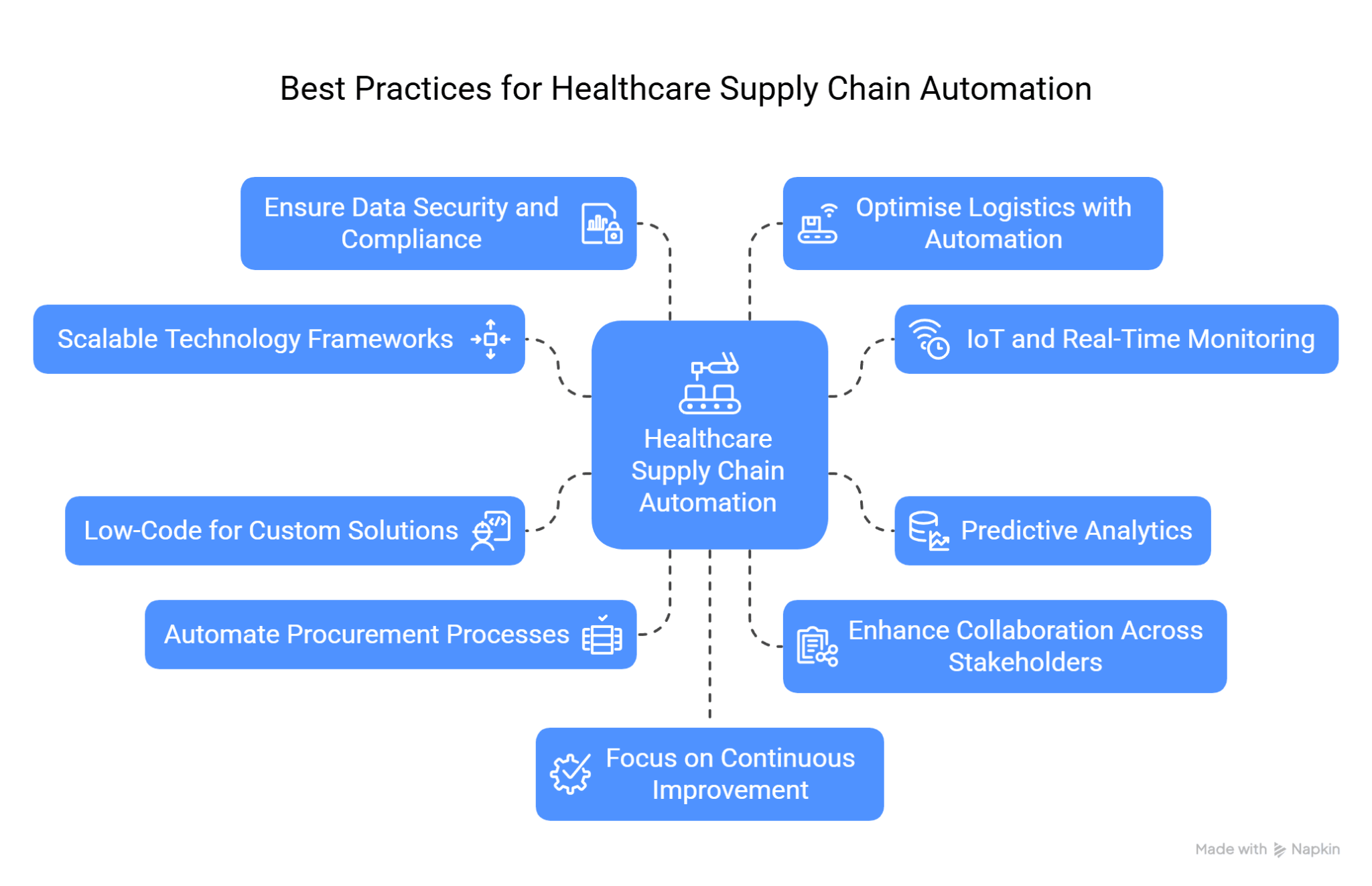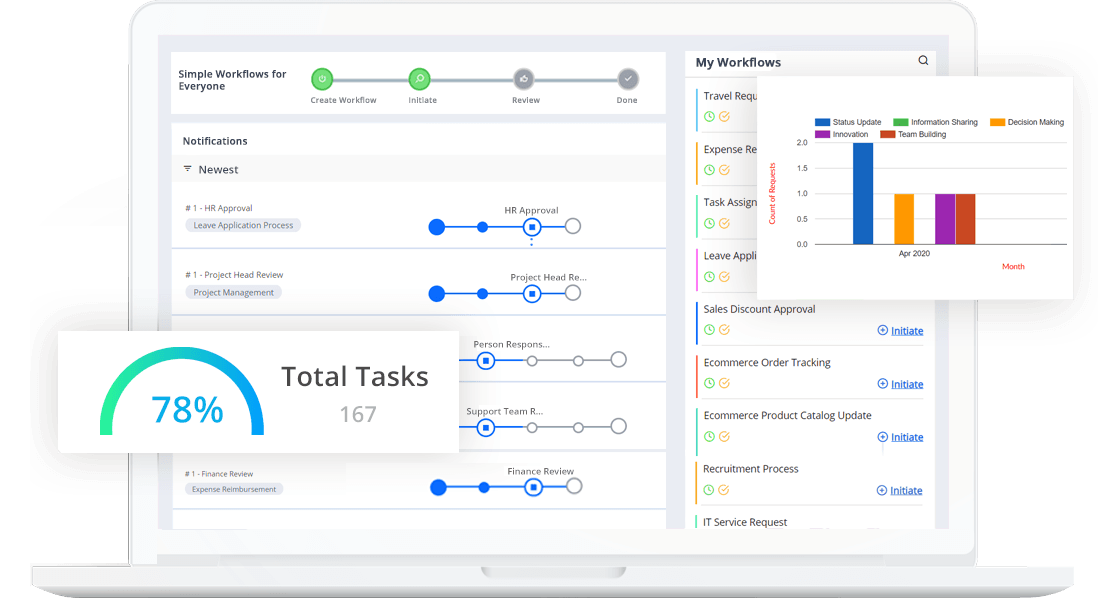Healthcare Supply Chain Automation: Optimizing Medical Device Management with Automation

Key takeaways
- Healthcare supply chain automation ensures real-time inventory tracking, demand forecasting, and optimised procurement, reducing delays and stockouts.
- Medical device supply chain management benefits from automated workflows, improving compliance tracking, vendor coordination, and shipment monitoring.
- Supply chain workflow automation in healthcare eliminates inefficiencies, reducing procurement costs and enhancing delivery reliability.
- Optimising medical device logistics with AI-driven analytics prevents overstocking, understocking, and supply chain disruptions.
- Automated inventory management for healthcare helps hospitals maintain regulatory compliance, minimise waste, and enhance operational efficiency.
The healthcare supply chain is a critical component of medical device management, ensuring that hospitals, clinics, and healthcare facilities have the necessary equipment to provide quality patient care. However, traditional supply chain methods face significant challenges, including inventory shortages, delayed deliveries, regulatory compliance hurdles, and fragmented vendor networks. These inefficiencies not only disrupt operations but also impact patient safety and hospital revenue. The global medical devices market is expected to grow to approximately $671.49 billion by 2027.
By integrating AI-powered inventory monitoring, automated procurement workflows, and real-time shipment tracking, healthcare organisations can enhance supply chain resilience, prevent stockouts, and ensure compliance with industry regulations. The role of automation is not just about efficiency—it’s about ensuring that critical medical devices are available when and where they are needed the most.
In this blog, we explore the challenges of traditional medical device supply chains, how workflow automation is revolutionising the industry, and the steps healthcare providers can take to implement automated solutions for optimised logistics and compliance.
The Growing Complexity of Medical Device Supply Chains
The healthcare supply chain is evolving rapidly due to rising demand for medical devices, stricter regulatory compliance mandates, and increasing global disruptions caused by pandemics, supply shortages, and geopolitical tensions. Hospitals, clinics, and medical device manufacturers must navigate these complexities while ensuring the timely procurement, accurate inventory tracking, and regulatory adherence necessary for smooth operations.
Medical devices, ranging from surgical instruments to life-saving equipment, require strict quality control, precise demand forecasting, and real-time visibility throughout the supply chain. However, traditional supply chain management approaches struggle to meet these demands, resulting in inefficiencies that can jeopardise patient care, delay critical procedures, and increase costs for healthcare providers.
Why Traditional Supply Chain Methods Are Failing?
Healthcare organisations that rely on manual procurement, fragmented vendor coordination, and outdated tracking systems often face serious inefficiencies, including –
- Delayed deliveries affecting patient care and emergency response – Slow procurement cycles and unreliable supply forecasting lead to shortages of essential medical equipment, impacting patient treatments.
- Regulatory compliance challenges – Strict regulations from bodies like the FDA and MDR (EU) require precise documentation and reporting, making manual tracking error-prone and increasing the risk of audits, fines, and legal issues.
- Inventory shortages and wastage – Poor demand forecasting and inefficient inventory management result in either stockouts that disrupt healthcare operations or overstocking, leading to waste and financial losses.
- Lack of real-time supply chain visibility – Many healthcare providers operate with limited data on supplier performance, shipment status, and product quality, increasing operational risks.
Given these challenges, healthcare supply chain automation is no longer optional but a necessity. By leveraging AI-driven automation, predictive analytics, and real-time monitoring, healthcare providers can reduce supply chain risks, improve resilience, and streamline logistics, ensuring medical devices are always available when needed.
Understanding the Unique Challenges in Medical Device Supply Chains
Managing the supply chain for medical devices is significantly more complex than standard logistics due to strict regulatory requirements, fragmented supplier networks, and the critical nature of medical products. These challenges can lead to supply shortages, regulatory non-compliance, and financial losses, ultimately impacting patient care and hospital operations. Without real-time visibility, automated tracking, and predictive analytics, healthcare providers struggle to maintain an efficient, resilient supply chain. Below are some of the most pressing challenges in medical device logistics –
1. Regulatory & Compliance Complexity
Medical device supply chains must comply with FDA (U.S.), MDR (EU), and other global healthcare regulations to ensure patient safety and product quality. However, manual documentation, compliance tracking, and regulatory audits create bottlenecks that delay shipments and increase the risk of non-compliance penalties. Without automated tracking, companies may fail to maintain real-time audit trails, leading to operational disruptions and costly legal consequences.
2. Fragmented Supplier Networks
Healthcare facilities rely on multiple vendors across different regions, making supply chain coordination challenging. A lack of real-time visibility into supplier performance results in inconsistent stock availability and delivery delays. Without a centralised vendor management system, hospitals risk procurement inefficiencies and delays in acquiring critical medical devices, impacting patient care and operational workflows.
3. Inventory Management Issues
Medical devices, particularly high-value, perishable, or life-saving equipment, require strict inventory tracking and optimised stock rotation. Manual inventory control often leads to –
- Overstocking – Overstocking results in waste, expired medical products, and unnecessary financial loss.
- Understocking – Understocking leads to shortages, delaying surgeries, treatments, and patient care.
- Supply chain inconsistencies – A lack of real-time inventory tracking prevents hospitals from responding effectively to changing demand.
Without automated inventory management, healthcare facilities struggle to balance demand fluctuations while ensuring medical device availability.
4. Supply Chain Disruptions & Lack of Agility
Global healthcare supply chains are vulnerable to external disruptions such as –
- Pandemics or public health emergencies
- Raw material shortages are impacting manufacturing
- Transportation and logistics delays
Traditional supply chain models lack real-time monitoring, predictive analytics, and automated risk mitigation, making it difficult for healthcare providers to adapt quickly. Without automation, healthcare supply chains remain reactive rather than proactive, increasing the risk of critical shortages.
How Workflow Automation Revolutionises Healthcare Supply Chains
Workflow automation is transforming healthcare supply chains by eliminating inefficiencies, reducing errors, and improving overall supply chain visibility. Automated processes help hospitals, clinics, and medical device manufacturers streamline procurement, enhance compliance tracking, and optimise inventory management, leading to greater resilience and cost savings. Below are some key ways in which automation is driving supply chain improvements –
1. Real-Time Inventory Monitoring & Predictive Analytics
Automated inventory systems powered by AI and predictive analytics provide accurate demand forecasting, allowing healthcare providers to anticipate shortages before they happen. Key benefits include –
- Prevention of stockouts – Ensures critical medical devices are always available.
- Reduction in overstocking – Eliminates excess inventory costs and wastage.
- Improved supply chain agility – AI dynamically adjusts inventory levels based on real-time demand changes.
2. Streamlined Supplier Onboarding & Vendor Compliance
Healthcare organisations rely on multiple vendors, making supplier onboarding and compliance tracking critical to avoiding disruptions. Automation simplifies this process by –
- Verifying supplier credentials and tracking certifications in real time.
- Ensuring vendors meet compliance standards before procurement approvals.
- Speeding up vendor onboarding, ensuring a consistent and uninterrupted supply flow.
3. Intelligent Order & Procurement Management
Manual procurement processes are prone to errors, delays, and inefficiencies that slow down the healthcare supply chain. Automated procurement systems improve workflow efficiency by –
- Automating purchase orders, approvals, and supplier communication.
- Reducing human errors in procurement and inventory tracking.
- Implementing just-in-time inventory replenishment for optimised stock levels.
4. Automated Shipment Tracking & Delivery Optimisation
Tracking shipment status and estimated delivery times manually increases the risk of lost, delayed, or mishandled shipments. Automation helps by:
- Providing real-time shipment tracking to prevent delivery disruptions.
- Leveraging AI-powered route optimisation to cut transportation costs and improve efficiency.
- Enhancing supply chain resilience by identifying shipment risks before they escalate.
5. Regulatory Compliance & Auditing Automation
Healthcare supply chains must meet strict regulatory standards, requiring precise documentation and audit-ready records. Automation ensures compliance through –
- Digital documentation and auto-generated reports that simplify regulatory audits.
- Traceability solutions that maintain a full compliance history of medical devices from manufacturing to patient use.
- Automated alerts for compliance issues, reducing the risk of penalties.
Best Practices for Implementing Healthcare Supply Chain Automation
Implementing best practices in healthcare supply chain automation ensures efficiency, compliance, and resilience. Leveraging AI, automation, and predictive analytics, healthcare providers can streamline procurement, optimise logistics, and enhance collaboration for seamless medical device management. Here are some best practices to follow.
1. Adopt Scalable Technology Frameworks
A scalable technology framework ensures that healthcare supply chains can adapt to future growth, evolving regulations, and changing market demands. Cloud-based supply chain management (SCM) solutions and workflow automation platforms provide flexibility, allowing seamless integration with EHR systems, compliance databases, and vendor networks.
2. Integrate Iot and Real-Time Monitoring
Iot-enabled tracking devices enhance visibility into medical device shipments, temperature-sensitive supplies, and asset utilisation. Real-time monitoring prevents delays, reduces wastage, and ensures on-time deliveries, improving supply chain resilience.
3. Embrace Predictive Analytics
Predictive analytics leverages AI and machine learning to forecast supply chain demand, anticipate shortages, and optimise procurement cycles. Healthcare providers can prevent stockouts, minimise waste, and improve inventory turnover by analysing historical data and market trends.
4. Utilise Low-Code for Custom Solutions
Low-code and no-code platforms enable healthcare administrators to build and modify workflows without extensive IT involvement. These solutions allow for customizable procurement processes, compliance tracking, and vendor management, improving supply chain efficiency.
5. Automate Procurement Processes
Automating procurement workflows eliminates manual bottlenecks, reduces errors, and speeds up order approvals. A 2017 survey revealed that 78% of hospital staff manually counted inventory at some point in their supply chain, highlighting the prevalence of manual processes in healthcare supply chains. AI-driven procurement solutions enhance cost control, vendor compliance, and contract management, ensuring seamless purchasing and replenishment.
6. Enhance Collaboration Across Stakeholders
Effective supply chain management requires strong collaboration between healthcare providers, suppliers, and regulatory agencies. Workflow automation tools centralise communication, streamline approvals, and provide real-time visibility into supply chain performance, ensuring better coordination and accountability. 67% of healthcare providers reported that their teams spend over 10 hours weekly addressing supply chain challenges and shortages.
7. Ensure Data Security and Compliance
Healthcare supply chains must adhere to HIPAA, FDA, and GDPR regulations to protect sensitive patient and supplier data. Implementing secure, automated compliance tracking and access controls ensures data integrity, reduces risks, and prevents regulatory violations.
8. Optimise Logistics with Automation
Automated logistics management improves routing efficiency, shipment tracking, and warehouse management. AI-driven solutions minimise delays, reduce transportation costs, and enhance supply chain resilience by optimising delivery schedules and carrier selection.
9. Focus on Continuous Improvement
A successful healthcare supply chain requires ongoing performance evaluation and process enhancements. Automated reporting, KPI tracking, and AI-powered insights help organisations identify inefficiencies, optimise workflows, and drive continuous improvements in procurement, logistics, and inventory management.
What’s Next for Healthcare Supply Chain Automation
The healthcare industry is rapidly advancing with automation-driven supply chain solutions. As hospitals and medical facilities strive to enhance operational efficiency, emerging technologies such as artificial intelligence (AI), blockchain, and the Internet of Things (IoT) are playing a pivotal role in optimising supply chain processes.
These innovations enable real-time tracking, predictive demand forecasting, and enhanced security, ensuring a more resilient and efficient healthcare supply network. Here’s how the future of supply chain workflow automation in healthcare is shaping up –
1. AI & Machine Learning for Smart Demand Forecasting
AI-driven predictive analytics will revolutionise supply chain management by allowing hospitals and healthcare facilities to anticipate future medical device needs. By analysing historical consumption patterns, AI can optimise inventory levels, reducing overstocking and preventing supply shortages.
2. Blockchain for Secure & Transparent Supply Chain Tracking
Blockchain technology is set to transform healthcare supply chains by enhancing transparency and security. By utilising blockchain-powered digital ledgers, hospitals and suppliers can track the movement of medical devices at every stage of the supply chain. This ensures regulatory compliance, prevents counterfeit products from entering the market, and enables faster recalls when necessary.
3. Iot-Enabled Real-Time Asset Tracking
IoT-powered smart sensors are becoming a game-changer in automated inventory management for healthcare. These sensors provide real-time updates on shipments, monitoring crucial parameters such as temperature, humidity, and handling conditions. This is particularly critical for temperature-sensitive medical devices and pharmaceuticals that require strict storage conditions.
4. Robotics & Automation in Warehousing
The implementation of robotics and automation in medical supply chain warehouses is enhancing inventory accuracy and efficiency. Automated Guided Vehicles (AGVs) and robotic arms streamline inventory movement, reducing the reliance on human intervention. These solutions improve order fulfilment accuracy, reduce errors, and optimise storage space.
5. Greater Integration with Telemedicine & Remote Patient Monitoring
With the rise of telemedicine and home healthcare, the demand for remote patient monitoring devices is increasing. Healthcare supply chain automation plays a crucial role in ensuring the timely delivery of these devices to patients’ homes.
End-to-end workflow automation
Build fully-customizable, no code process workflows in a jiffy.
Optimising Healthcare Supply Chains with Cflow’s AI-based Automation
Cflow is a powerful AI-based workflow automation platform designed to streamline supply chain processes in healthcare organisations. From procurement and inventory tracking to regulatory compliance and vendor management, Cflow enables hospitals, clinics, and medical suppliers to optimise supply chain operations with AI-powered automation. By eliminating manual inefficiencies, improving visibility, and ensuring real-time tracking of medical devices, Cflow enhances supply chain resilience and reduces operational risks.
With seamless integrations with Electronic Health Records (EHR), Enterprise Resource Planning (ERP) systems, and supplier networks, Cflow simplifies complex logistics and ensures that medical devices and critical supplies reach the right place at the right time. Here’s how Cflow empowers healthcare supply chain automation –
Key Features of Cflow for Healthcare Supply Chain Management –
- Automated Procurement Workflows
- Streamlined purchase request approvals to avoid supply delays
- Automated vendor onboarding and performance tracking
- Ensures compliance with procurement policies and regulatory requirements
- AI-Powered Inventory Management
- Monitors real-time stock levels to prevent shortages
- Automates replenishment alerts to avoid medical device stockouts
- Reduces waste by optimising inventory allocation
- Regulatory Compliance Automation
- Auto-generates compliance reports for regulatory audits
- Tracks supplier compliance to prevent penalties
- Ensures full traceability of medical device shipments
4. Seamless EHR & ERP Integration
- Syncs medical supply chain workflows with EHR & ERP systems
- Provides a centralised dashboard for tracking medical device movement
- Eliminates data discrepancies between the supply chain and patient records
- Predictive Analytics for Demand Forecasting
- Predicts future supply needs based on historical trends
- Reduces last-minute procurement costs and inefficiencies
- Prevents disruptions in medical device availability
The Road Ahead for Supply Chain Efficiency in Healthcare
The healthcare industry is experiencing rapid transformation, and supply chain automation is no longer a luxury. The ability to streamline procurement, optimise inventory management, ensure regulatory compliance, and enhance supply chain visibility is crucial for healthcare providers.
By investing in workflow automation, healthcare organisations can –
- Reduce supply chain disruptions
- Ensure compliance with strict regulatory standards
- Improve cost-efficiency in procurement and inventory management
To stay ahead, healthcare providers must embrace AI-driven workflow automation to ensure seamless operations and patient safety. Sign up for Cflow today and transform your healthcare supply chain with AI-powered workflow automation!
FAQs
1. How does workflow automation improve medical device supply chains?
Workflow automation enhances medical device supply chains by streamlining procurement, optimising inventory tracking, and ensuring real-time supply visibility. Automated processes reduce manual inefficiencies, prevent stock shortages, and minimise overstocking. AI-powered analytics improve demand forecasting, ensuring healthcare providers receive necessary medical devices on time.
2. Can automation help with healthcare regulatory compliance?
Yes, automation plays a crucial role in maintaining healthcare regulatory compliance by generating real-time audit reports, tracking supplier certifications, and ensuring adherence to HIPAA, FDA, and MDR regulations. Automated compliance workflows help healthcare organisations prevent regulatory violations by maintaining accurate documentation, implementing role-based access controls, and triggering alerts for potential non-compliance risks.
3. What are the key features to look for in healthcare supply chain automation?
When selecting a healthcare supply chain automation solution, key features to consider include AI-powered demand forecasting, which helps predict medical device needs and optimise procurement planning. Real-time inventory tracking ensures continuous stock visibility, preventing shortages and overstocking. Supplier compliance monitoring automates vendor credential tracking, ensuring adherence to HIPAA, FDA, and MDR regulations.
Automate your workflows with our Cflow experts.What would you like to do next?
Get your workflows automated for FREE




